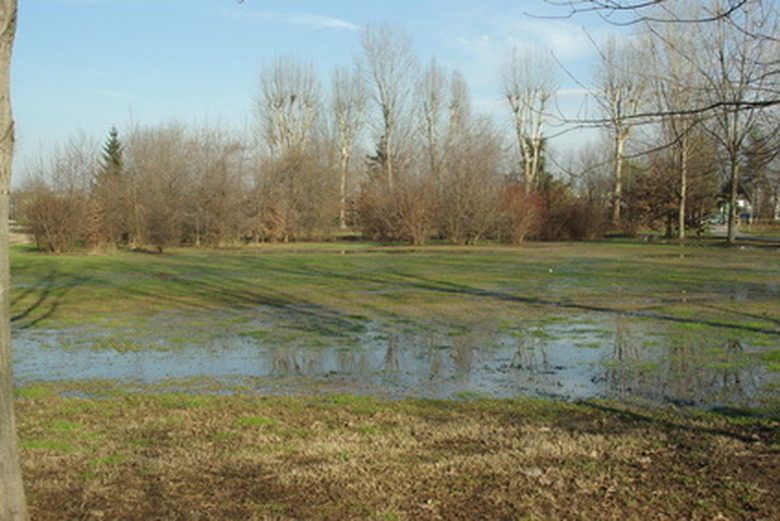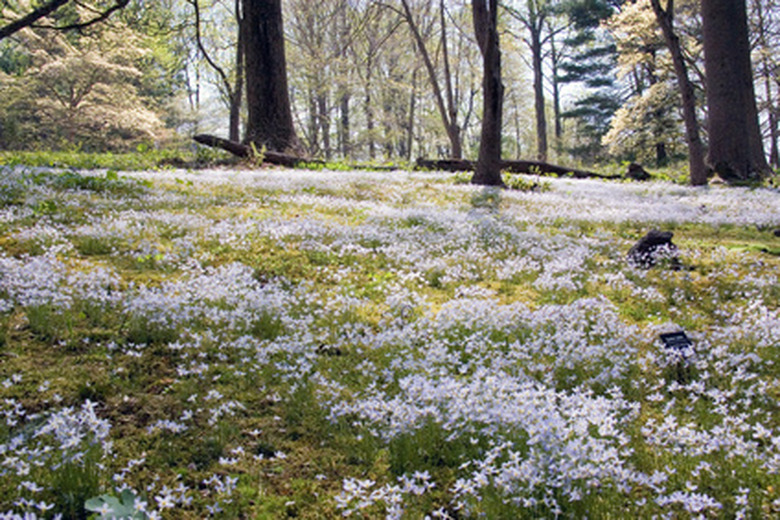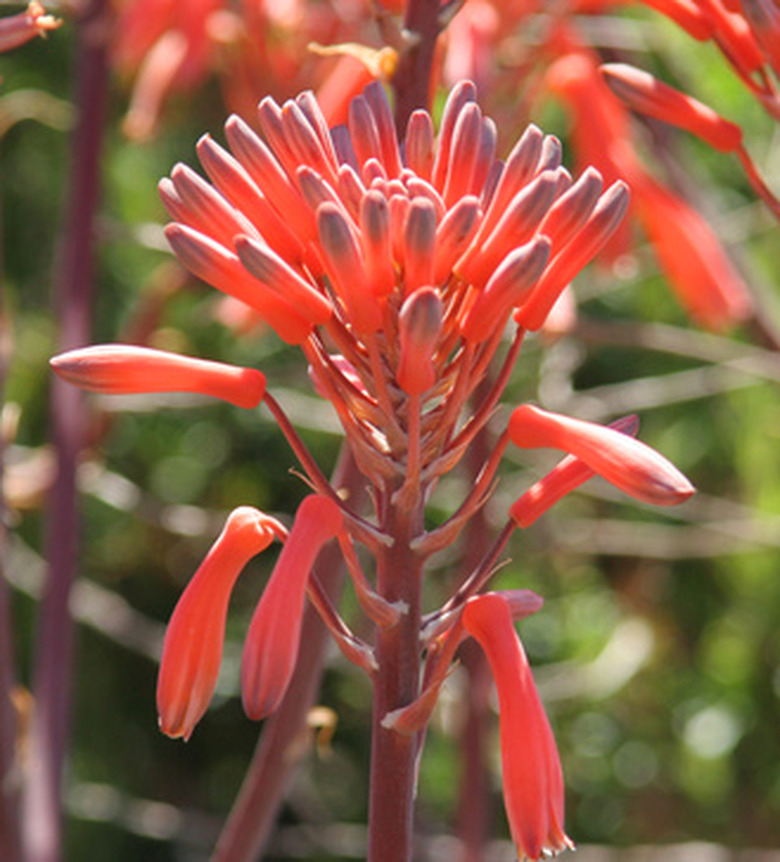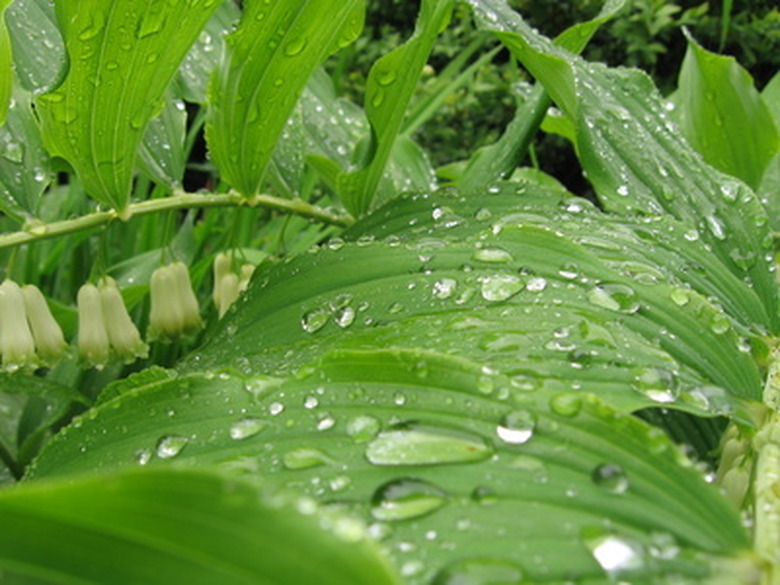What Plants Are Shade Tolerant For A Rain Garden In Eastern Pennsylvania?
There are corners for rain gardens in most urban gardens. They catch runoff from buildings and paved areas, conserving water that benefits other plants and cut down on city water consumption. They also direct water into local aquifers that feed wells and reservoirs critical to local water supplies. If your eastern Pennsylvania rain garden contains shade as well as sunny areas, try to use shade-tolerant plants that are native to the mid-Atlantic area.
Why Native
Choose from hundreds of shade-tolerant plants to fill a rain garden, but native plants are the first choice for several reasons. The goal of a rain garden is sustainability through conservation; native plants are successful in the climate and geography of their specific regions. They are water-neutral–no extra water is needed. They require fewer nutrients, reducing or eliminating usage of one of the major sources of point pollution, fertilizer. Native plants are a win-win proposition. They may require as much care as other garden perennials or as little as an annual mowing. Resources are readily available for both rain gardens and native plants in eastern Pennsylvania. The Bucks County Conservation District provides rain garden support, and organizations like the Fairmont Park Organization of Philadelphia and Temple University provide lists and other resources for native plant-seekers.
- There are corners for rain gardens in most urban gardens.
- They catch runoff from buildings and paved areas, conserving water that benefits other plants and cut down on city water consumption.
Wetland Plants
Wetland plants must tolerate periods when the ground is completely waterlogged but also be able to survive as it dries out and for periods when it may be quite dry; they are the ultimate survivors. If your rain garden is in a swale or low place that floods often, use some of these grasses: bull rush (polyphyllus), wild rye (villosus), bladder sedge and lurid and awl-fruited sedge. Sensitive fern will thrive in part to deep shade. Lizard's tail, halberd-leaved tearthumb, arrow-arum, bee balm (M. didyma), mimulus, cardinal flower, great-blue lobelia, swamp mallow, swamp sunflower, boneset, purple-leaved willow herb, marsh marigold, beggar-ticks, purple-stemmed aster, rough avens are a few of the flowering plants that flourish in eastern Pennsylvania wetlands. Swamp milkweed, Goldie's wood fern, cinnamon fern, royal fern, wood reed grass, striped violet, sweet white violet, American dog violets will all grow in deep shade.
Woodland Plants
Woodland plants favor more acidic soil and many prefer a moist environment. Many are appropriate for rain garden use in a wooded area. Pennsylvania sedge, bottlebrush grass, Virginia rye, sedge and fringed sedge are moist woodland grasses. Nodding trillium, (viginiana), blue-stem goldenrod, carrion-flower, blue-eyed grass, golden ragwort, three-lobed coneflower, Bowman's root, Jacob's ladder, Allegheny monkey-flower, Virginia bluebells, Joe-Pye weed, blue cohosh, big leaf aster, blue wood aster, purple hyssop and wild oats all tolerate a range of light to part shade. Full-shade lovers include bloodroot, Dutchman's breeches, spring beauty, Jack-in-the pulpit, wild ginger, Southern agronomy, doll's eyes, cutleaf coneflower, spider wort, nodding trillium, rattlesnake fern, lady fern, maidenhair fern, ostrich fern, Solomon's seal, false Solomon's seal and mayapple. Some plants, like partridge berry, Canada lily and Turk's cap lily make spectacular rain garden residents providing the area is not plagued by grazing deer.
- Wetland plants must tolerate periods when the ground is completely waterlogged but also be able to survive as it dries out and for periods when it may be quite dry; they are the ultimate survivors.
- If your rain garden is in a swale or low place that floods often, use some of these grasses: bull rush (polyphyllus), wild rye (villosus), bladder sedge and lurid and awl-fruited sedge.



